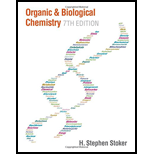
Organic And Biological Chemistry
7th Edition
ISBN: 9781305081079
Author: STOKER, H. Stephen (howard Stephen)
Publisher: Cengage Learning,
expand_more
expand_more
format_list_bulleted
Concept explainers
Textbook Question
Chapter 1, Problem 1.118EP
Indicate whether the members of each of the following pairs of hydrocarbons are (1) constitutional isomers, (2) stereoisomers, or (3) not isomers.
- a. 2-Methylpentane and cyclopentane
- b. 2-Methylpentane and 2-ethylpentane
- c. Ethylcyclohexane and 1,2-dimethylcyclohexane
- d. cis-l,3-Diethylcyclobutane and trans-1,3-diethylcyclobutane
Expert Solution & Answer
Trending nowThis is a popular solution!

Students have asked these similar questions
Which of the following statement is true about alkanes?
a
Alkanes are one of the three unsaturated hydrocarbons.
b
Alkanes are always linear molecules.
c
Alkanes are commonly derived from petroleum and natural gas.
d
Alkanes have 4 additional hydrogens compared to an alkene with the same number of carbon.
Hexane and cyclohexane are examples of two molecules that are.
A . Constitutional Isomers
B. cis - trans isomers
C. identical
D. enanitiomers
E . Unrelated with different formulas
What is not correct about alkanes
a. They have relatively high boiling points
b. They have relatively low boiling points
c. They are hydrocarbons
d. They contain a lot of energy
Chapter 1 Solutions
Organic And Biological Chemistry
Ch. 1.1 - Prob. 1QQCh. 1.1 - Prob. 2QQCh. 1.2 - Which of the following statements about the...Ch. 1.2 - Prob. 2QQCh. 1.3 - Prob. 1QQCh. 1.3 - Prob. 2QQCh. 1.4 - Prob. 1QQCh. 1.4 - Prob. 2QQCh. 1.4 - Prob. 3QQCh. 1.5 - Prob. 1QQ
Ch. 1.5 - Prob. 2QQCh. 1.5 - Prob. 3QQCh. 1.6 - Prob. 1QQCh. 1.6 - Prob. 2QQCh. 1.6 - Prob. 3QQCh. 1.6 - Prob. 4QQCh. 1.7 - Prob. 1QQCh. 1.7 - Prob. 2QQCh. 1.8 - Prob. 1QQCh. 1.8 - Prob. 2QQCh. 1.8 - Prob. 3QQCh. 1.8 - Prob. 4QQCh. 1.8 - Prob. 5QQCh. 1.8 - Prob. 6QQCh. 1.8 - Prob. 7QQCh. 1.9 - Prob. 1QQCh. 1.9 - Prob. 2QQCh. 1.10 - Prob. 1QQCh. 1.10 - Prob. 2QQCh. 1.11 - Prob. 1QQCh. 1.11 - Prob. 2QQCh. 1.11 - Prob. 3QQCh. 1.12 - Prob. 1QQCh. 1.12 - Prob. 2QQCh. 1.12 - Prob. 3QQCh. 1.13 - Prob. 1QQCh. 1.13 - Prob. 2QQCh. 1.13 - Prob. 3QQCh. 1.14 - Prob. 1QQCh. 1.14 - Prob. 2QQCh. 1.14 - Prob. 3QQCh. 1.15 - Prob. 1QQCh. 1.15 - Prob. 2QQCh. 1.16 - Prob. 1QQCh. 1.16 - Prob. 2QQCh. 1.16 - Prob. 3QQCh. 1.17 - Prob. 1QQCh. 1.17 - Prob. 2QQCh. 1.17 - Prob. 3QQCh. 1.17 - Prob. 4QQCh. 1.18 - Prob. 1QQCh. 1.18 - Prob. 2QQCh. 1.18 - Prob. 3QQCh. 1.18 - Prob. 4QQCh. 1 - Prob. 1.1EPCh. 1 - Prob. 1.2EPCh. 1 - Prob. 1.3EPCh. 1 - Prob. 1.4EPCh. 1 - Indicate whether each of the following situations...Ch. 1 - Indicate whether each of the following situations...Ch. 1 - Prob. 1.7EPCh. 1 - Prob. 1.8EPCh. 1 - What is the difference between a saturated...Ch. 1 - What structural feature is present in an...Ch. 1 - Prob. 1.11EPCh. 1 - Prob. 1.12EPCh. 1 - Prob. 1.13EPCh. 1 - Prob. 1.14EPCh. 1 - Prob. 1.15EPCh. 1 - Prob. 1.16EPCh. 1 - Convert the expanded structural formulas in...Ch. 1 - Prob. 1.18EPCh. 1 - Prob. 1.19EPCh. 1 - Prob. 1.20EPCh. 1 - Prob. 1.21EPCh. 1 - Prob. 1.22EPCh. 1 - Prob. 1.23EPCh. 1 - Prob. 1.24EPCh. 1 - Prob. 1.25EPCh. 1 - Prob. 1.26EPCh. 1 - Indicate whether each of the following would be...Ch. 1 - Indicate whether each of the following would be...Ch. 1 - Prob. 1.29EPCh. 1 - Explain why two different straight-chain alkanes...Ch. 1 - With the help of Table 12-1, indicate how many...Ch. 1 - Prob. 1.32EPCh. 1 - How many of the numerous eight-carbon alkane...Ch. 1 - How many of the numerous seven-carbon alkane...Ch. 1 - For each of the following pairs of structures,...Ch. 1 - For each of the following pairs of structures,...Ch. 1 - Convert each of the following linear condensed...Ch. 1 - Prob. 1.38EPCh. 1 - Prob. 1.39EPCh. 1 - Prob. 1.40EPCh. 1 - Prob. 1.41EPCh. 1 - Prob. 1.42EPCh. 1 - Prob. 1.43EPCh. 1 - Prob. 1.44EPCh. 1 - Prob. 1.45EPCh. 1 - Prob. 1.46EPCh. 1 - Prob. 1.47EPCh. 1 - Prob. 1.48EPCh. 1 - Prob. 1.49EPCh. 1 - Prob. 1.50EPCh. 1 - Prob. 1.51EPCh. 1 - Prob. 1.52EPCh. 1 - Draw a condensed structural formula for each of...Ch. 1 - Draw a condensed structural formula for each of...Ch. 1 - Prob. 1.55EPCh. 1 - For each of the alkanes in Problem 12-54,...Ch. 1 - Explain why the name given for each of the...Ch. 1 - Prob. 1.58EPCh. 1 - Indicate whether or not the two alkanes in each of...Ch. 1 - Prob. 1.60EPCh. 1 - How many of the 18 C8 alkane constitutional...Ch. 1 - How many of the nine C7 alkane constitutional...Ch. 1 - Prob. 1.63EPCh. 1 - Prob. 1.64EPCh. 1 - Prob. 1.65EPCh. 1 - Prob. 1.66EPCh. 1 - Do the line-angle structural formulas in each of...Ch. 1 - Do the line-angle structural formulas in each of...Ch. 1 - Convert each of the condensed structural formulas...Ch. 1 - Convert each of the condensed structural formulas...Ch. 1 - Assign an IUPAC name to each of the compounds in...Ch. 1 - Prob. 1.72EPCh. 1 - Prob. 1.73EPCh. 1 - Prob. 1.74EPCh. 1 - For each of the alkane structures in Problem...Ch. 1 - For each of the alkane structures in Problem...Ch. 1 - Prob. 1.77EPCh. 1 - Prob. 1.78EPCh. 1 - Prob. 1.79EPCh. 1 - Prob. 1.80EPCh. 1 - Prob. 1.81EPCh. 1 - Prob. 1.82EPCh. 1 - Draw condensed structural formulas for the...Ch. 1 - Draw condensed structural formulas for the...Ch. 1 - To which carbon atoms in a hexane molecule can...Ch. 1 - Prob. 1.86EPCh. 1 - Prob. 1.87EPCh. 1 - Prob. 1.88EPCh. 1 - Give an acceptable alternate name for each of the...Ch. 1 - Prob. 1.90EPCh. 1 - Prob. 1.91EPCh. 1 - Prob. 1.92EPCh. 1 - Prob. 1.93EPCh. 1 - Prob. 1.94EPCh. 1 - What is the molecular formula for each of the...Ch. 1 - Prob. 1.96EPCh. 1 - Prob. 1.97EPCh. 1 - Prob. 1.98EPCh. 1 - Prob. 1.99EPCh. 1 - How many secondary carbon atoms are present in...Ch. 1 - Assign an IUPAC name to each of the following...Ch. 1 - Assign an IUPAC name to each of the following...Ch. 1 - Prob. 1.103EPCh. 1 - Prob. 1.104EPCh. 1 - Prob. 1.105EPCh. 1 - Prob. 1.106EPCh. 1 - What is the molecular formula for each of the...Ch. 1 - Prob. 1.108EPCh. 1 - Prob. 1.109EPCh. 1 - Prob. 1.110EPCh. 1 - Prob. 1.111EPCh. 1 - Prob. 1.112EPCh. 1 - Determine whether cistrans isomerism is possible...Ch. 1 - Prob. 1.114EPCh. 1 - Prob. 1.115EPCh. 1 - Prob. 1.116EPCh. 1 - Prob. 1.117EPCh. 1 - Indicate whether the members of each of the...Ch. 1 - Prob. 1.119EPCh. 1 - Prob. 1.120EPCh. 1 - Prob. 1.121EPCh. 1 - Prob. 1.122EPCh. 1 - Prob. 1.123EPCh. 1 - Which member in each of the following pairs of...Ch. 1 - Prob. 1.125EPCh. 1 - Prob. 1.126EPCh. 1 - Answer the following questions about the...Ch. 1 - Prob. 1.128EPCh. 1 - Prob. 1.129EPCh. 1 - Prob. 1.130EPCh. 1 - Write molecular formulas for all the possible...Ch. 1 - Write molecular formulas for all the possible...Ch. 1 - Prob. 1.133EPCh. 1 - Prob. 1.134EPCh. 1 - Prob. 1.135EPCh. 1 - Assign an IUPAC name to each of the following...Ch. 1 - Prob. 1.137EPCh. 1 - Prob. 1.138EPCh. 1 - Prob. 1.139EPCh. 1 - Prob. 1.140EPCh. 1 - Prob. 1.141EPCh. 1 - Prob. 1.142EPCh. 1 - Prob. 1.143EPCh. 1 - Prob. 1.144EPCh. 1 - Prob. 1.145EPCh. 1 - Prob. 1.146EPCh. 1 - Give the IUPAC names for the eight isomeric...Ch. 1 - Prob. 1.148EP
Knowledge Booster
Learn more about
Need a deep-dive on the concept behind this application? Look no further. Learn more about this topic, chemistry and related others by exploring similar questions and additional content below.Similar questions
- Why are different conformations of an alkane not considered structural isomers?arrow_forwardDraw the structural formula for each of the following. a.3-isobutylhexane b.2,2,4-trimethylpentane, also called isoocta11e. This substance is the reference (100 level) for octane ratings. c. 2-tert-butylpentane d.The names given in parts a and c are incorrect.Give the correct names for these hydrocarbonsarrow_forwardDraw condensed formulas for the following compounds:(a) 3-ethyl-3-methyloctane; (b) 1-ethyl-3-propylcyclohexane (also draw a carbon-skeleton formula for this compound); (c) 3,3-diethyl-1-hexyne; (d) trans-3-methyl-3-heptene.arrow_forward
- Which statements about alkenes and alkanes of corresponding chain lengths are true? (I) Alkenes have slightly lower melting points than alkanes(I) Alkenes have slightly higher melting points than aikanes(III) Alkenes have higher boiling points than alkanes(V) Akenes have lower boiling points than a kanes a. l and IIIb. ll and IVc. l and IVd. ll and Illarrow_forwardFor each of the following hydrocarbons, state how many carbon atoms are in each molecule: (a) 2-methylhexane (b) neopentane (c) acetylenearrow_forwardWhich of the following statements about alkanes, alkenes and alkynes is FALSE?A. Alkanes can be solids, liquids or gases.B. Alkenes are always gases in state at room temperature.C. Alkanes are more reactive to halogenation compared to alkenes.D. Alkynes exhibit the greatest electron density among hydrocarbonsarrow_forward
- The reaction of an alkene with water produces what type of product? A) alkane B) alkyne C) alcohol D) aldehyde E) amino acidarrow_forwardWrite condensed structures for the following compounds:(a) 4-tert-Butyl-2-methylheptane(b) 2,4-Dimethylpentane(c) 4,4-Diethyl-3-methyloctane(d) 3-Ethyl-1-isopropyl-5-methylcycloheptane(e) 1,1,3-Trimethylcyclopentanearrow_forwardOf the compounds listed here, which one is not a constitutional isomer of the other three? A) 2,2-dimethylbutane B) 2,3-dimethylpentane C) 3-ethylpentane D) 3-methylhexanearrow_forward
- Compounds used as reference standards for octane ratings of 100 and 0, respectively, are a. 2,2,4-trimethylpentane and heptane. b. octane and isooctane. c. isooctane and octane. d. gasoline and diesel fuel. e. isooctane and 2,2,4-trimethylpentane.arrow_forwarda. Which of the following compounds have the same empirical formula?(1) But-2-ene(2) Propane(3) EtheneA. (1) and (2) onlyB. (1) and (3) onlyC. (2) and (3) onlyD. (1), (2) and (3) b. Which of the following statements concerning homologous series is INCORRECT?A. Members of a series have identical chemical properties.B. Members of a series have the same general formula.C. Each member differs from the next by a −CH2− group.D. Members of a series show a gradual change of physical properties.arrow_forwardGasohol is a mixture of 90% gasoline and 10% ethanol, CH 3CH 2OH. Ethanol is considered an environmentally friendly fuel additive because it can be made from a renewable source—sugarcane. Ethanol burns in air to form CO 2 and H 2O, and, like the combustion of alkanes, this reaction also releases a great deal of energy. Write a balanced equation for the combustion of ethanol.arrow_forward
arrow_back_ios
SEE MORE QUESTIONS
arrow_forward_ios
Recommended textbooks for you
- Chemistry: Matter and ChangeChemistryISBN:9780078746376Author:Dinah Zike, Laurel Dingrando, Nicholas Hainen, Cheryl WistromPublisher:Glencoe/McGraw-Hill School Pub Co
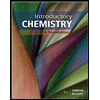 Introductory Chemistry: A FoundationChemistryISBN:9781337399425Author:Steven S. Zumdahl, Donald J. DeCostePublisher:Cengage Learning
Introductory Chemistry: A FoundationChemistryISBN:9781337399425Author:Steven S. Zumdahl, Donald J. DeCostePublisher:Cengage Learning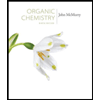
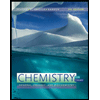 Chemistry for Today: General, Organic, and Bioche...ChemistryISBN:9781305960060Author:Spencer L. Seager, Michael R. Slabaugh, Maren S. HansenPublisher:Cengage Learning
Chemistry for Today: General, Organic, and Bioche...ChemistryISBN:9781305960060Author:Spencer L. Seager, Michael R. Slabaugh, Maren S. HansenPublisher:Cengage Learning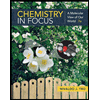

Chemistry: Matter and Change
Chemistry
ISBN:9780078746376
Author:Dinah Zike, Laurel Dingrando, Nicholas Hainen, Cheryl Wistrom
Publisher:Glencoe/McGraw-Hill School Pub Co

Introductory Chemistry: A Foundation
Chemistry
ISBN:9781337399425
Author:Steven S. Zumdahl, Donald J. DeCoste
Publisher:Cengage Learning



Chemistry for Today: General, Organic, and Bioche...
Chemistry
ISBN:9781305960060
Author:Spencer L. Seager, Michael R. Slabaugh, Maren S. Hansen
Publisher:Cengage Learning

Chapter 4 Alkanes and Cycloalkanes Lesson 2; Author: Linda Hanson;https://www.youtube.com/watch?v=AL_CM_Btef4;License: Standard YouTube License, CC-BY
Chapter 4 Alkanes and Cycloalkanes Lesson 1; Author: Linda Hanson;https://www.youtube.com/watch?v=PPIa6EHJMJw;License: Standard Youtube License